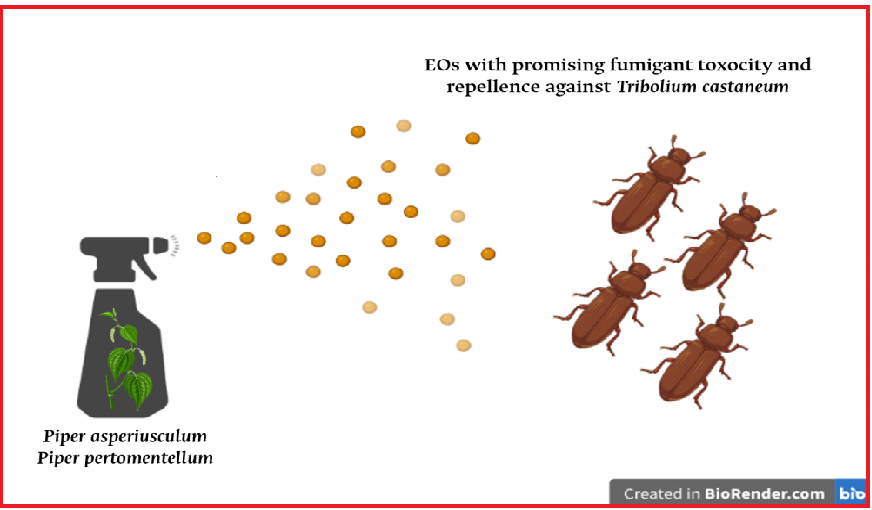JOURNAL 3279
Records of Natural Products
Available Online: April 01,2025
p.1 - 13
http://doi.org/10.25135/rnp.501.2408.3279 (DOI number will be activated after the manuscript has been available in an issue.)
Viewed 183 times.
GRAPHICAL ABSTRACT

ABSTRACT
Many essential oils (EOs) from plants have potential applications as insecticides. In the present study, EOs from leaves and inflorescences of Piper cf. asperiusculum var. glabricuale Trel. & Yunck and Piper pertomentellum Trel. & Yunck were analyzed through gas chromatography coupled to mass spectrometry (GC-MS) and their insecticidal activity against the red flour weevil Tribolium castaneum (Herbst) (Coleoptera: Tenebrionidae) was evaluated. The main components in P. asperiusculum were myristicin (15%–35%) and dillapiole (36-48%), whereas the main compounds in P. pertomentellum were limonene (4%–17%), germacrene D (10%–29%) and β-caryophyllene (6%–10%). Results showed that the EOs from fresh inflorescences of P. pertomentellum had higher fumigant toxicity against T. castaneum (LC50 63.2 μL/L air). All oils evaluated showed over 90% repellency at 0.063 μL/cm2.
KEYWORDS- Piper cf. asperiusculum
- Piper pertomentellum
- Tribolium castaneum
- fumigant; repellent